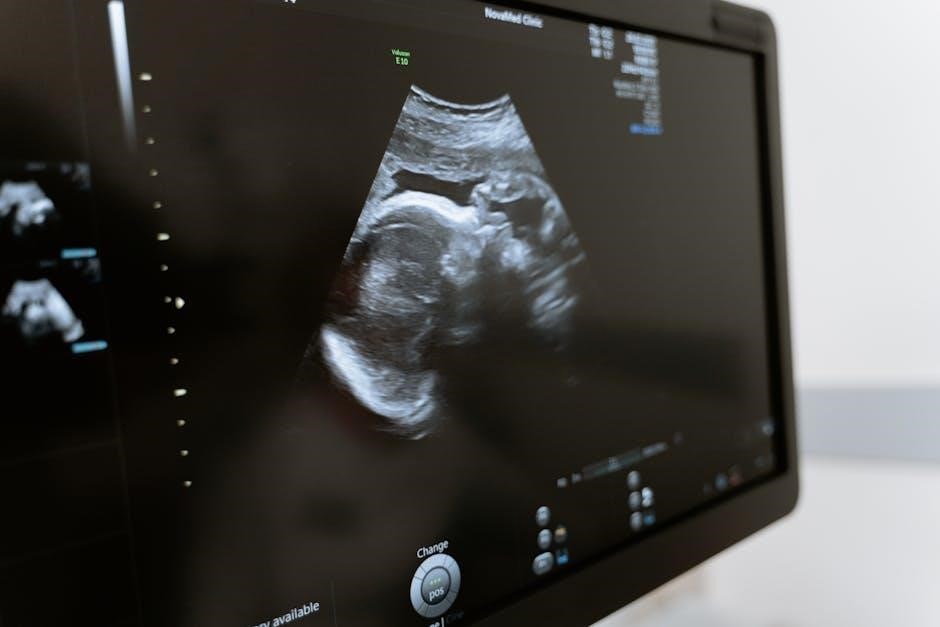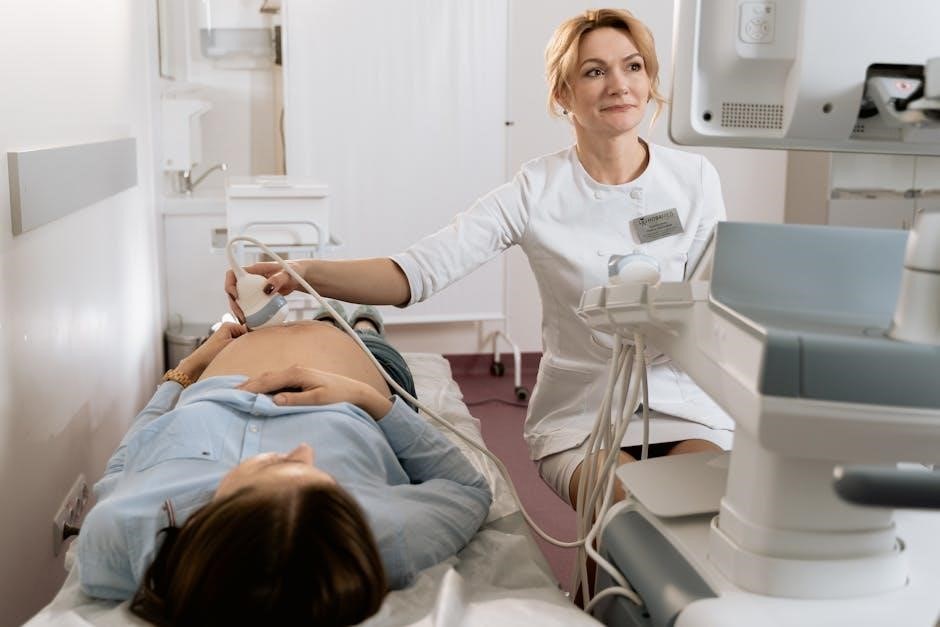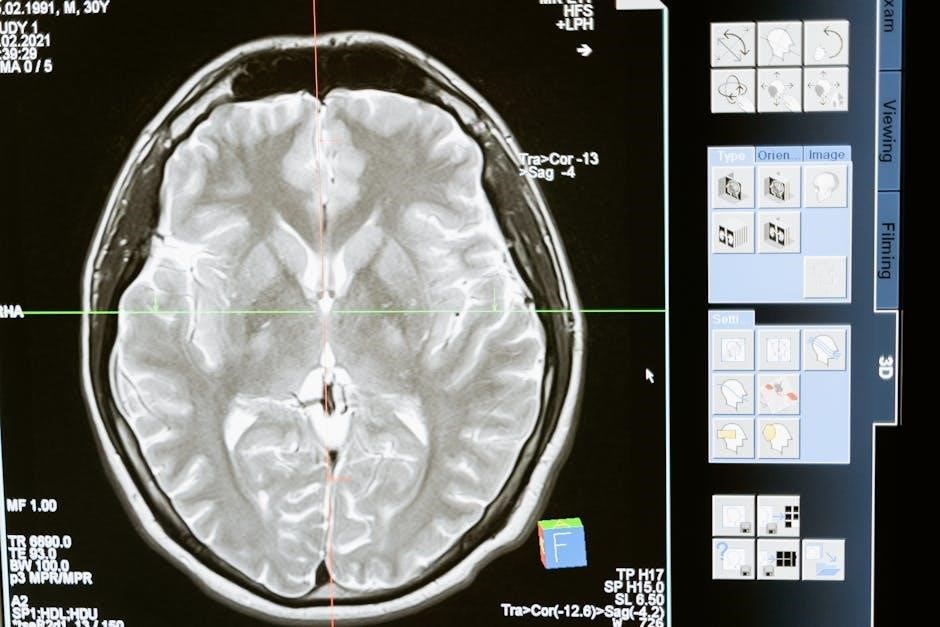The Bates Guide to Physical Examination Test Bank provides step-by-step guidance on performing patient interviews and physical examinations using
- authoritative sources
and clinical reasoning skills effectively always online.
Overview of the Test Bank
The test bank is a comprehensive resource covering all aspects of physical examination and history taking, with a focus on practical application and clinical reasoning skills. It includes multiple-choice questions and case studies to help students assess their knowledge and understanding of key concepts. The test bank is designed to be used in conjunction with the Bates Guide to Physical Examination and History Taking, 12th Edition, and provides a range of questions and activities to support learning and assessment. The content is organized to reflect the structure of the textbook, with each chapter covering a specific area of physical examination and history taking. The test bank is an essential resource for students and instructors, providing a thorough and authoritative assessment of knowledge and skills in this critical area of healthcare practice, using online resources and study materials effectively always.

Chapters Covered in the Test Bank
The test bank covers twenty chapters of the guide using
- various
online resources effectively always.
Chapter 1: An Overview of Physical Examination and History Taking
The first chapter of the Bates Guide to Physical Examination Test Bank provides an overview of physical examination and history taking, including the importance of a comprehensive health history. This chapter uses tables and figures to illustrate key concepts, such as the difference between subjective and objective data. The test bank includes multiple-choice questions to assess understanding of these concepts, such as identifying the appropriate patient for a comprehensive health history. The chapter also discusses the skills required for effective physical examination and history taking, including communication and interpersonal skills. By the end of this chapter, students should be able to describe the components of a comprehensive health history and explain the importance of distinguishing between subjective and objective data. The chapter is essential for healthcare professionals to develop their assessment skills. Various online resources are available to support learning.
Chapter 2: Evaluating Clinical Evidence
This chapter focuses on evaluating clinical evidence, which is crucial for making informed decisions in healthcare. The Bates Guide to Physical Examination Test Bank provides questions that assess the ability to analyze and interpret clinical data. A patient presents with a sharp, aching chest pain that increases with breathing, and the test bank asks which anatomic area the symptom would be localized to. The correct answer is the musculoskeletal area. The chapter emphasizes the importance of applying clinical reasoning and shared decision-making skills. It includes multiple-choice questions that require the application of knowledge to real-world scenarios. By evaluating clinical evidence, healthcare professionals can develop effective treatment plans and improve patient outcomes. The test bank supports the development of these critical thinking skills, which are essential for healthcare professionals. Various examples are provided to illustrate key concepts and support learning and assessment.
Chapter 3: Interviewing and the Health History
The Bates Guide to Physical Examination Test Bank covers interviewing and health history taking in this chapter. It provides questions that assess the ability to conduct effective interviews and gather relevant health information. The chapter emphasizes the importance of active listening, empathy, and communication skills in building trust with patients. Multiple-choice questions require the application of knowledge to real-world scenarios, such as determining the appropriateness of a comprehensive health history for a patient. The test bank supports the development of skills in interviewing and health history taking, which are essential for healthcare professionals. Various examples are provided to illustrate key concepts and support learning and assessment. By mastering these skills, healthcare professionals can gather accurate and relevant information, make informed decisions, and develop effective treatment plans. The chapter includes questions that evaluate the ability to distinguish between relevant and irrelevant information.

Multiple Choice Questions in the Test Bank
The test bank includes multiple choice questions using
- various formats
to assess knowledge and skills effectively online always.
Comprehensive Health History Questions
The comprehensive health history questions in the test bank are designed to assess the ability to obtain a thorough medical history from patients, using a variety of question formats, including multiple choice and short answer questions. These questions cover topics such as chief complaints, present illnesses, past medical histories, and family and social histories. The test bank includes questions that require the application of clinical reasoning skills to evaluate patient data and make informed decisions. The questions are organized by topic and are designed to be used in conjunction with the Bates Guide to Physical Examination and History Taking textbook. The test bank is a valuable resource for students and healthcare professionals who want to improve their skills in taking comprehensive health histories and applying clinical reasoning to patient care. The questions are written in a clear and concise manner, making it easy to understand and apply the concepts.
Clinical Evidence Evaluation Questions
The clinical evidence evaluation questions in the test bank assess the ability to evaluate and apply clinical evidence to patient care, using a variety of question formats, including multiple choice and short answer questions. These questions cover topics such as evaluating the validity and reliability of clinical evidence, applying evidence-based practice to patient care, and critically evaluating the results of clinical studies. The test bank includes questions that require the application of clinical reasoning skills to evaluate patient data and make informed decisions. The questions are organized by topic and are designed to be used in conjunction with the Bates Guide to Physical Examination and History Taking textbook. The test bank is a valuable resource for students and healthcare professionals who want to improve their skills in evaluating clinical evidence and applying it to patient care, with a focus on critical thinking and problem-solving skills, and is easily accessible online.

Importance of Comprehensive Health Histories
Comprehensive health histories are essential for accurate diagnoses using patient data and informed decision-making always online effectively.
Distinguishing Between Subjective and Objective Data
The ability to distinguish between subjective and objective data is crucial in physical examination and history taking, as it enables healthcare professionals to make accurate diagnoses and develop effective treatment plans.
Using reliable sources such as the Bates Guide to Physical Examination and History Taking, healthcare professionals can learn to identify and record subjective data, which is information reported by the patient, and objective data, which is information observed or measured by the healthcare professional.
This distinction is essential in evaluating clinical evidence and making informed decisions about patient care, and is a key concept covered in the test bank for the Bates Guide to Physical Examination and History Taking, with multiple choice questions and practice exercises to help reinforce this important skill, including
- identifying symptoms
and
- assessing patient history
.

Practice Questions for Physical Examination
Physical examination practice questions are included using
- multiple choice
formats to assess knowledge effectively online always.
General Survey, Vital Signs, and Pain Questions
The test bank includes questions on general survey, vital signs, and pain assessment, which are essential components of a physical examination. These questions are designed to evaluate the student’s ability to collect and interpret data from a patient’s general survey, vital signs, and pain history. The questions are presented in a multiple-choice format, allowing students to select the most appropriate answer from a range of options. The test bank also includes questions on the different types of pain, such as acute and chronic pain, and how to assess and manage them. Additionally, the test bank covers the various vital signs, including temperature, blood pressure, and heart rate, and how to interpret them. By practicing with these questions, students can develop their critical thinking skills and become proficient in performing physical examinations. The questions are based on the latest edition of the Bates Guide to Physical Examination and History Taking.
Relevance to Medical Practice
The Bates Guide to Physical Examination Test Bank is highly relevant to medical practice as it provides healthcare professionals with the skills and knowledge necessary to conduct thorough physical examinations and take accurate medical histories; The test bank is designed to reflect real-world medical scenarios, allowing healthcare professionals to practice and apply their skills in a simulated environment. By using the test bank, healthcare professionals can improve their ability to collect and interpret data, make accurate diagnoses, and develop effective treatment plans. The test bank is also useful for medical students, as it provides them with a comprehensive understanding of physical examination and history taking techniques. Overall, the Bates Guide to Physical Examination Test Bank is an essential resource for healthcare professionals and medical students, as it helps to ensure that they are well-prepared to provide high-quality patient care. The test bank is a valuable tool for medical education and practice.

